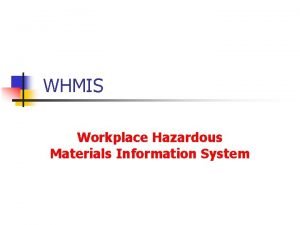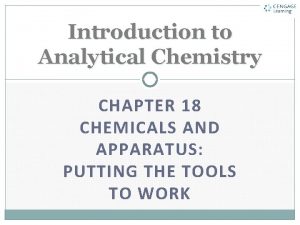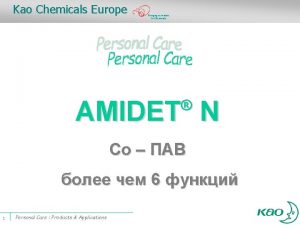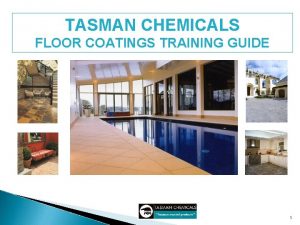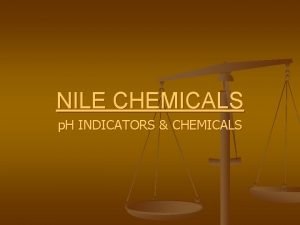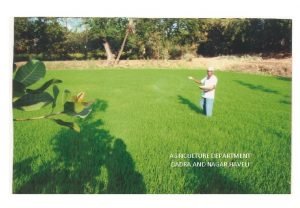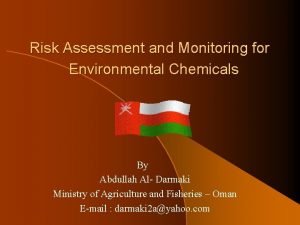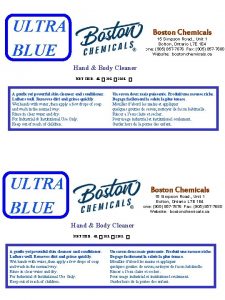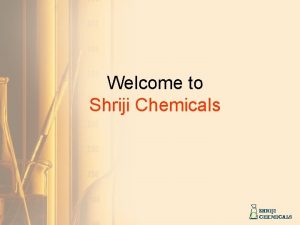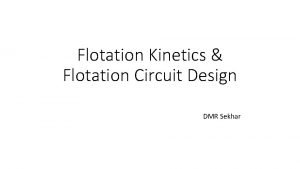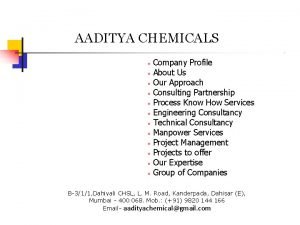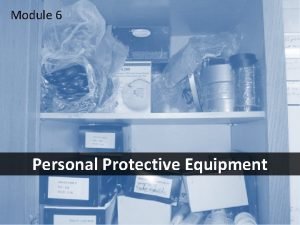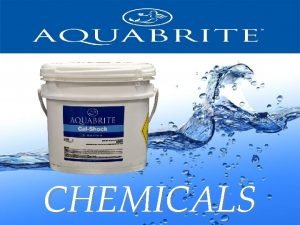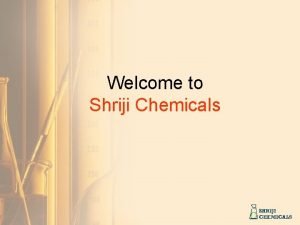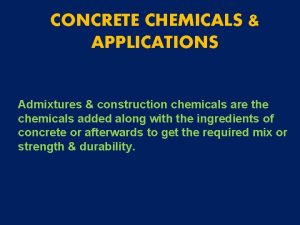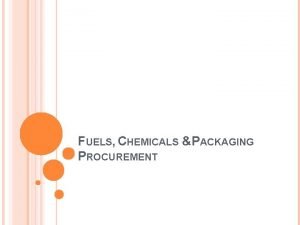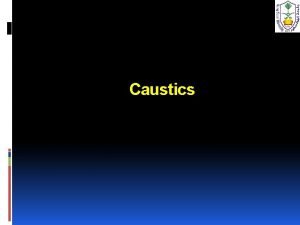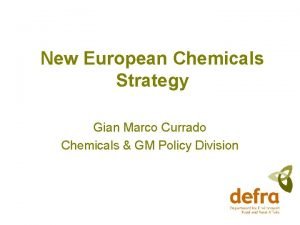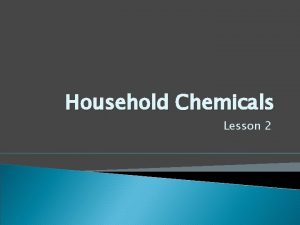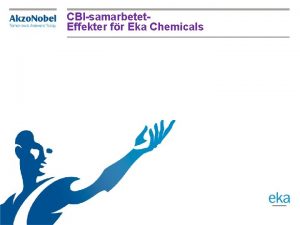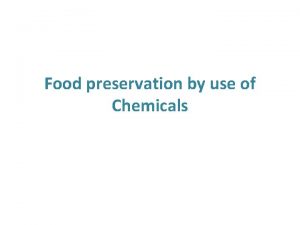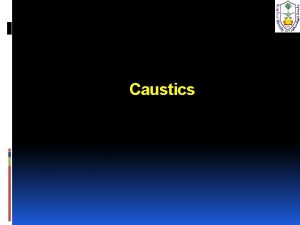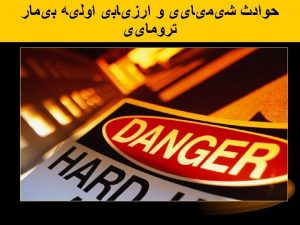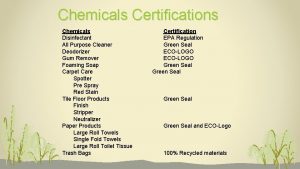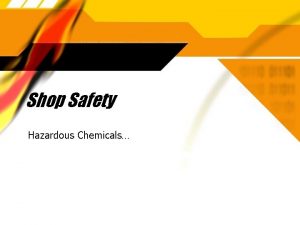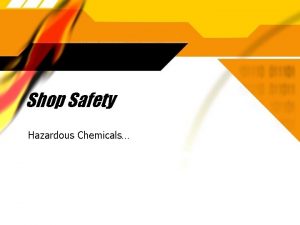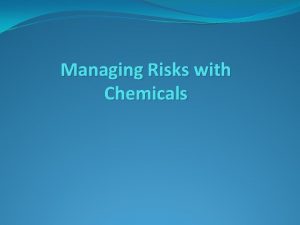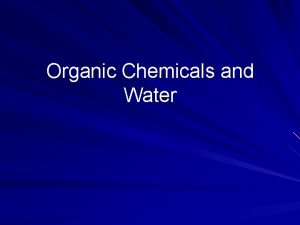Pesticides What are Pesticides Pesticides are chemicals that


























- Slides: 26

Pesticides

What are Pesticides? • Pesticides are chemicals that are designed to kill pests.

Pests • A pest is an organism that people consider harmful or inconvenient, such as weeds, insects, fungi, and rodents. Example: -Young European Corn borers (larvae)

Types of Pesticides Used • Herbicides kill plants • Insecticides kill insects • Fungicides kill fungi *Pesticides are an easy and effective way of killing pests!*

How Pesticides Work • Not all pesticides work in the same manner Examples: 1) One type of pesticide interferes with the plant’s ability to undergo photosynthesis 2) Another type of pesticide kills pests by causing damage to the pest’s organs.

Problems with Pesticides… Can harm organisms that are not the intended target. -most pesticides are toxic to humans and other animals.

Problems with Pesticides… Pollution Wind, rain, snow, etc. can cause the pesticides to contaminate the air, soil or water…. -pesticides can enter our drinking water (ground water) and we can get sick! -pesticides can also damage food webs

How do pesticides damage food webs? -Pesticides enter the environment through air, soil, and water contamination. -Primary consumers take them in by consuming producers or by contamination of abiotic factors (air, water, etc. )

How do pesticides damage food webs? ? Bioaccumulation! -pesticides collect/accumulate in the bodies of organisms. -pesticides dissolve in fat, but not water. So the toxin cannot be released in urine or sweat, it stays in the animal’s body fat!!

How do pesticides damage food webs? ? -When pesticides collect in the body of an affected organism, they also affect that organism’s consumer. Bioamplification: **Pesticides become more concentrated as they move up the food chain**

Bioamplification -continued • Each predator eats many prey, therefore, at each stage of the food chain the concentration becomes greater.

12 P Owl P 4 P 4 P 4 P Shrews P P P P Grasshoppers P P

Resistance to Pesticides • When a pesticide is used for too long, some species may become resistant to it. -the farmer needs to apply MORE pesticide or -the farmer needs to apply a STRONGER pesticide to control the pests.

Examples of harmful pesticides • DDT - Fat soluble Insecticide -lingers for 2 -15 years -thinned eggshells of peregrine falcons; DDT video baby birds died and species became endangered. -believed to cause cancer (carcinogen)

Alternatives to harmful pesticides • Water Soluble Pesticides? Upside: -Do not collect in animal fat, animals can remove the toxin from their bodies Downsides: -Not as effective against pests -Still contaminate water, soil, air -Still toxic to non-target organisms

Pesticide Alternative? 1) Natural pesticides: -made with garlic, cayenne pepper, dish soap 2) Organic farming: -no pesticide use -crop losses

Test Yourself • Which statement is true regarding DDT? a) DDT is not a serious problem since it is biodegradable. b) DDT will kill all the pests it is used against. c) DDT tends to accumulate in the tissues of top predators. d) DDT is water soluble so it is normally excreted in urine C

Which statement best describes the problem associated with continued use of the same pesticide? a) The pests are completely eliminated from the ecosystem. b) The pesticide kills a greater number of pests with each application. c) The pesticide kills fewer of the pests with each application. d) Pesticides are generally highly specific and rarely harm beneficial organisms. C

What is the most common problem associated with fat soluble pesticides? a) They tend to contaminate the ground water supply. b) They are highly specific to a single pest species. c) They are prone to bioaccumulation. d) They must be sprayed more often than water soluble pesticides. C

Which is most likely to contain the highest concentration of pesticide in its body tissues? a) wheat b) snakes c) frogs d) grasshoppers b

True or False • The higher the trophic level, the greater the concentration of toxin. TRUE!! This is bioamplification!

Pesticides Review 1) Name three different pesticides. What are their target pests? -Herbicides kill plants -Insecticides kill insects -Fungicides kill fungi

2) List the benefits of using pesticides on crops -Prevent damage to crops -Kills pests that could cause disease

3) List the long-term problems of using pesticides in an ecosystem -Contamination of air, soil and water -Animals and humans drink contaminated water and get sick -Affect non-target organisms (damage food webs) -Cancer

4) Why do certain pesticides build up in the body of an organism? -Fat soluble pesticides dissolve in the fatty tissues of organisms. -Organisms can’t eliminate the chemicals with other wastes.

5) Explain the different between bioaccumulation and bioamplification. Bioaccumulation: -Pesticide collecting in the organism’s body Bioamplification: -Pesticide increasing in concentration as it moves up the food chain
 Commodity vs specialty chemicals
Commodity vs specialty chemicals Insidan region jh
Insidan region jh Phân độ lown
Phân độ lown Chiến lược kinh doanh quốc tế của walmart
Chiến lược kinh doanh quốc tế của walmart Gây tê cơ vuông thắt lưng
Gây tê cơ vuông thắt lưng Block nhĩ thất độ 1
Block nhĩ thất độ 1 Tìm vết của đường thẳng
Tìm vết của đường thẳng Sau thất bại ở hồ điển triệt
Sau thất bại ở hồ điển triệt Thể thơ truyền thống
Thể thơ truyền thống Hãy nói thật ít để làm được nhiều
Hãy nói thật ít để làm được nhiều Thơ thất ngôn tứ tuyệt đường luật
Thơ thất ngôn tứ tuyệt đường luật Tôn thất thuyết là ai
Tôn thất thuyết là ai Whmis r with test tube
Whmis r with test tube Special purpose reagent chemicals
Special purpose reagent chemicals Kao chemicals
Kao chemicals Tasman slate sealer
Tasman slate sealer Nile chemicals
Nile chemicals Agriculture practices projects in dadra & nagar haveli
Agriculture practices projects in dadra & nagar haveli Oman chemicals
Oman chemicals Boston chemicals
Boston chemicals Shriji chemicals
Shriji chemicals Mangalore chemicals and fertilizers parent organizations
Mangalore chemicals and fertilizers parent organizations Kinetics flotation chemicals
Kinetics flotation chemicals Aaditya chemicals
Aaditya chemicals On july 18 2001 a train carrying hazardous chemicals
On july 18 2001 a train carrying hazardous chemicals A worker mixing chemicals must not wear
A worker mixing chemicals must not wear Behn meyer specialty chemicals llp
Behn meyer specialty chemicals llp












